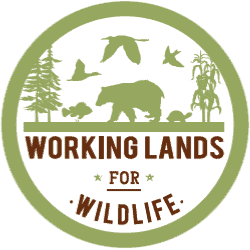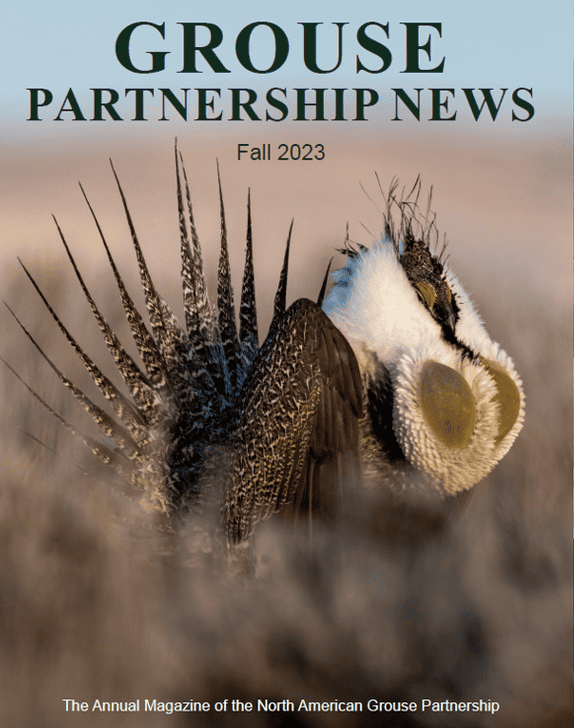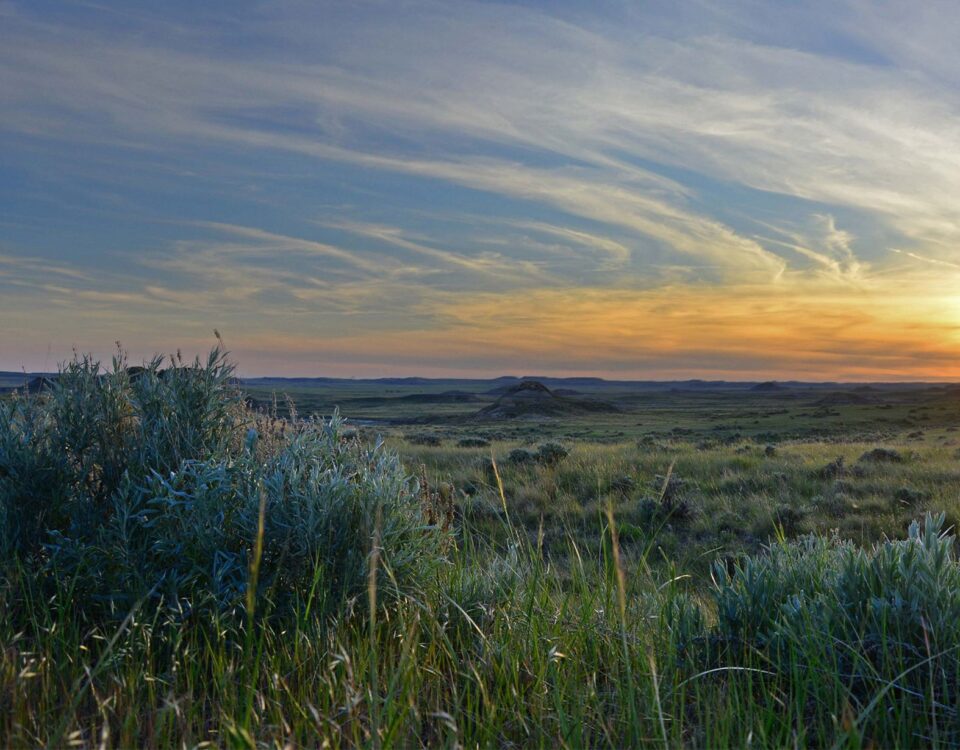
How Do Conservation Easements Work?
In Montana, landowners have partnered with local land trusts to conserve 2 million acres. Expert Lisa McCauley from NRCS explains why easements work for ranchers and wildlife.
New Mexico Range Managers Put Science to Work for Prairie-Chickens
April 14, 2017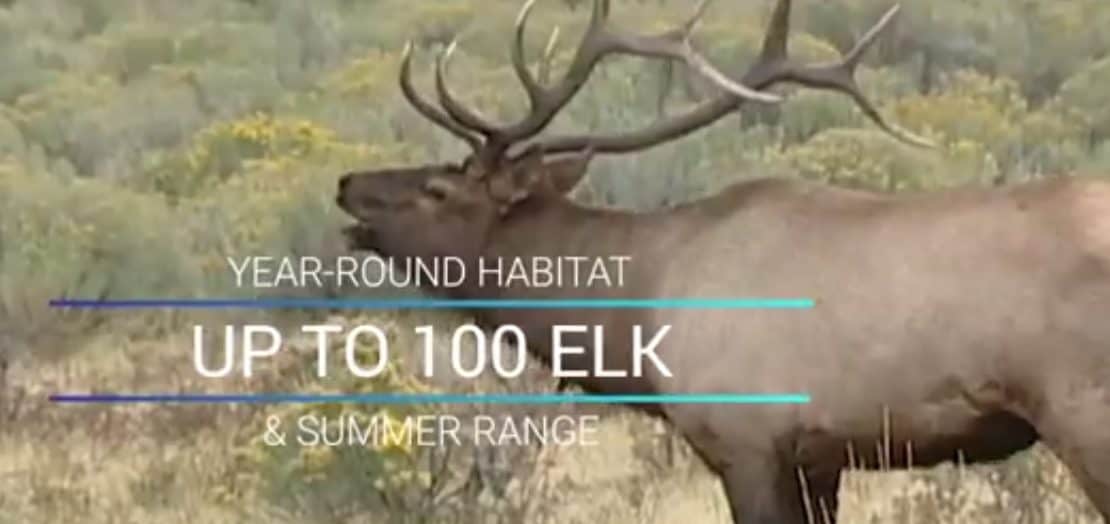
Wildhorse Ranch Project: A Win-Win Partnership To Protect Sagebrush Range
April 21, 2017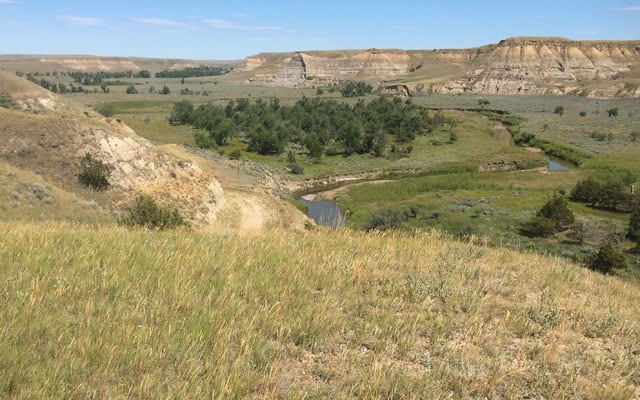
With help from NRCS conservation easement programs, The Nature Conservancy preserved this working ranch and sage-grass habitat on 16,000 acres in northeastern Montana.
ASK AN EXPERT: Lisa McCauley, Easement Specialist, USDA Natural Resources Conservation Service, Montana
(Update: Lisa McCauley is now an Easement Program Specialist at the NRCS’s Washington, DC headquarters).
What is a conservation easement?
It’s a voluntary legal agreement between a landowner and a qualified organization, like a land trust, which places some long term conservation restrictions on the use of a property in order to protect its natural values. In Montana, easements are often designed and used by ranchers to limit subdivision development. This helps keep their large working ranches intact for future generations.
The USDA Natural Resources Conservation Service’s goal is to empower partners and ranchers to work together and protect the places that matter the most to all of us. In a nutshell, our cooperative efforts focus on maintaining viable agricultural lands to ensure future food security and to protect prime wildlife habitat, grasslands, and soils.
What type of easements are funded by NRCS?
The Agricultural Conservation Easement Program, funded through the Farm Bill, provides financial and technical assistance to help conserve agricultural lands or wetlands. All easements restrict future developments, but certain types of easements can do more or less depending on the landowner’s conservation goals and the type of land enrolled.
For instance, we use Agricultural Land Easements to assist state and local governments and non-governmental partners who are working with landowners to limit non-agricultural uses of rangeland. These easements fall into two categories: “prime soils protection” where tillage is allowed, or “grasslands of special significance” where annual tillage is prohibited.
We also have a category for Wetlands Reserve Easements. These agreements are designed to restore, protect, and enhance wetlands, a vital habitat used by 80% of all wildlife species, including sage grouse.

NRCS’ Wetland Reserve Program helps landowners protect vital water resources, like this seasonal wetland in Montana’s prairie pothole region, through conservation easements.
What are the benefits of easements for ranchers?
Each landowner’s conservation objectives differ as they look to achieve their long term goals for their agricultural operations. Some use NRCS easements as a tool to pass on their ranch to the next generation. Others use our easement resources as a way to invest in more land, which helps them expand their operations to stay sustainable and profitable in the long term.
How many landowners participate?
Montana leads the nation in Sage Grouse Grasslands of Special Significance Agricultural Land Easements. As we continue to build our program with our partners, more and more landowners are signing up. Word of mouth is the main reason landowners apply—they see and hear of the conservation benefits directly from their friends and neighbors, people they trust most.
This year, we’re going to end up with close to 40 applications for enrollment in the Agricultural Conservation Easement Programs—the most ever from our state!
Why has Montana NRCS been so successful in helping landowners conserve the range?
Simply put, it’s largely due to our incredible partners—the land trusts who hold almost all of the easements NRCS invests in.
These local partners are dedicated to putting conservation on the ground and their hard work has paid off! To date, they’ve conserved a total of over two million acres throughout Montana. Their great reputations are a major reason why landowners are willing to work with NRCS and use our easement programs. NRCS is so lucky to be able to partner with Montana’s land trusts, and would not be successful without them.
This past year, NRCS hosted 11 easement workshops around the state in partnership with Montana Fish Wildlife and Parks, U.S. Fish and Wildlife Service, and the Montana Association of Land Trusts. We each gave presentations that described our respective easement options, talked through which types of easements might fit local situations or specific landowners, and worked as a team to deliver a one-stop shop for easements. I have no doubt that these workshops are one of the reasons why NRCS had such a great application turnout this year.

This map shows all existing conservation easements in Montana (in red), which total 2 million acres. NRCS-funded easements appear as dots (size based on the number of easements in that area).
How do these easements help sage grouse?
First and foremost, it keeps subdivisions out of their neighborhood and maintains the wide-open landscapes the birds need to survive. Chopping up sagebrush country into residential developments degrades and disrupts sagebrush habitat. Fragmentation also threatens ranching families who depend on intact rangeland to run livestock.
Our easements also focus on another major threat to sage grouse in the northeastern portion of their range: converting sagebrush into a monoculture of cultivated crops. The most recent Farm Bill now allows us to work with landowners to restrict annual tillage through the Grasslands of Special Significance easements. These easements compensate landowners for maintaining the healthy, diverse native plant systems that sage grouse and 350 other species rely on, while continuing to provide grazing resources for livestock.
Lastly, our Wetlands Reserve Easements enhance the mesic habitats that sage grouse chicks rely on during the summer and fall. Though Montana’s rangeland is mainly dominated by grasslands, NRCS has been working to protect key wetlands in Montana’s prairie pothole region since the late 1990s and has recently increased resources in this region. In 2017 alone, we’ve enrolled nearly 9,000 acres in new wetland easements. Conserving these rare wet habitats benefits sage grouse, waterfowl, and many other birds and wildlife.

Subdivisions chop up and degrade sagebrush habitat, and also fragment working ranchlands.
How much has NRCS invested in easements that benefit sage grouse?
Just through the Sage Grouse Initiative, NRCS has invested nearly $42 million since 2010 to conserve 191,200 acres of sage grouse habitat in Montana alone. That’s roughly 300 square miles of rangeland and natural resources that will be protected for the benefit of wildlife, working lands, and future generations.
To put those numbers in perspective, from 1995 to 2009—the 15 years prior to the Sage Grouse Initiative’s emphasis on protecting sagebrush rangelands—NRCS easement programs invested a total of $3.5 million to conserve 30,000 acres in Montana.
The really exciting part is that the momentum is still on the rise. In fact, two-thirds of all NRCS sage grouse-related easements in Montana were put in place since 2015. And we’re on track to conserve another 100,000 acres of prime grass, soil, and water resources in Montana’s sagebrush country this year alone!
| Time Frame | Number of NRCS Easements | Total Acres Conserved |
| 1995 – 2009 | 6 | 29,643 |
| 2010 – 2014 | 15 | 54,144 |
| 2015 – 2017 | 26 | 137,213 |
MEET THE EXPERT

Lisa McCauley oversees all NRCS conservation easement programs in the state of Montana.
How long have you been working for the NRCS?
I’ve been with NRCS nearly 15 years. In that time, I’ve worked with the agency in Idaho, Alaska, and now here in Montana, where I oversee all of the conservation easements. Originally, I’m from the state of Washington, and received a Master’s in Agriculture from Washington State University.
What are your favorite hobbies?
Fishing, hunting, downhill skiing, and horseback riding, to name a few. And wine tasting, though I have to go back home to Washington state for that one.

